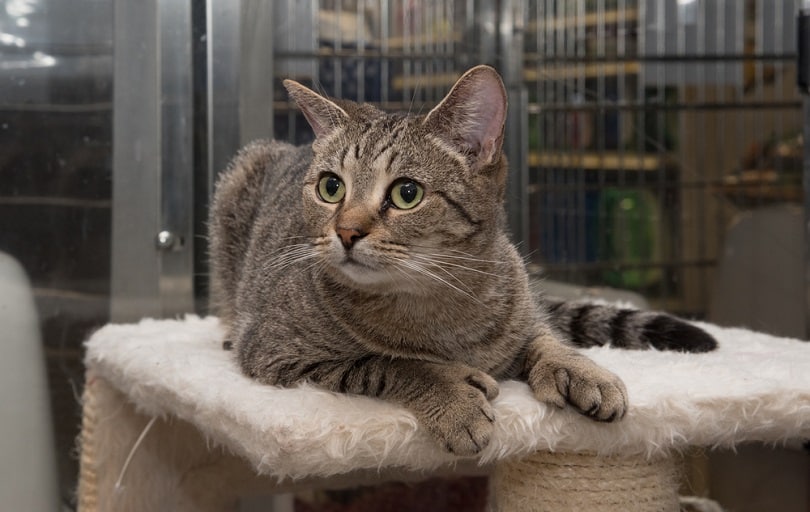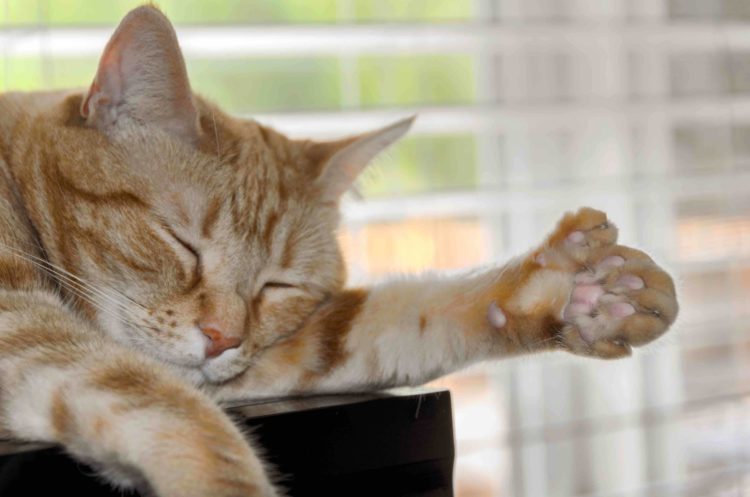Polydactyl cats are felines with one or more extra toes. They’re commonly referred to as Hemmingway’s cats because the author, Ernest Hemmingway, owned a cat, Snow Ball, who had the characteristic. Cats with the trait are most often found in England, Wales, the Eastern United States, and Canada.
Normal Cat Paw vs Polydactyl
Polydactylism is inherited and results from a genetic mutation. Cats with extra toes are usually just as healthy as other cats, and the trait doesn’t appear to impact affected animals much.
Most polydactyl cats have anywhere from five to seven toes; normal cats have five toes on their front paws and four on each back paw. A ginger tabby with 28 fully formed toes holds the record for the most extra digits. The extra toes usually grow close to the dewclaw, often making it appear like the cat has a thumb.
The front paws are most commonly impacted, but the abnormality is also found on cats’ back paws. Cats with extra toes on all four feet are quite rare. The trait is found in nearly every breed and among males, females, and large and small cats.
Although historically, many Maine Coon cats were born with the trait. The characteristic sometimes delivers benefits as it often provides an advantage in balance and hunting. Regarding the polydactyl cat personality, there isn’t a noticeable difference compared to a normal feline.
How Much Is a Polydactyl Cat Worth?

Polydactyly doesn’t impact a cat’s worth. A purebred cat with the trait will not be worth more or less than a similar cat without extra toes.
Are Polydactyl Cats Rare?
Not really. The trait results from a relatively common genetic mutation. If a cat with the gene for polydactyly procreates, there’s a 50% chance its offspring will have extra digits.
Where Can I Go to See a Polydactyl Cat?
Hemmingway’s former house in Key West is now a museum and home to several polydactyl cats descended from the writer’s pet.
Conclusion
Polydactyl cats are animals with extra toes on one or more paws. The trait results from a genetic mutation and is quite common among cats in England, the Eastern United States, Canada, and Wales. The feature can be found in cats of all breeds, colors, and coat lengths. There’s no link between the polydactyly mutation and other health conditions.
Related Reads:
- Are Polydactyl Cats Inbred? Everything You Need to Know
- 10 Fascinating Facts About Polydactyl Cats (With Pictures)
Featured Image Credit: Lux Blue, Shutterstock











